P in a Circle Symbol Car: prking brake!
The P inside a circle symbol on a car dashboard represents the parking brake or electronic parking brake system. When illuminated, it indicates that the parking brake is applied.
The P in a circle symbol in a car is an important indicator for drivers. It typically appears as a red or amber light on the dashboard and serves as a reminder that the parking brake, also known as the handbrake or emergency brake, is currently engaged.
The symbol is particularly common in vehicles with an electronic parking brake (EPB) system, which replaces the traditional lever with a button or switch.
Here’s a breakdown of what the symbol means:
Color of the Symbol:
Some vehicles also feature a warning chime that sounds if the vehicle is in motion while the parking brake is applied, further alerting the driver to disengage the brake to avoid damage to the braking system or unsafe driving conditions.
Always ensure the P in a circle symbol is not illuminated while driving, as it signifies the parking brake is applied and can cause damage to your car’s brake system if ignored.

Key Takeaway
Understanding the ‘P in a Circle’ Symbol
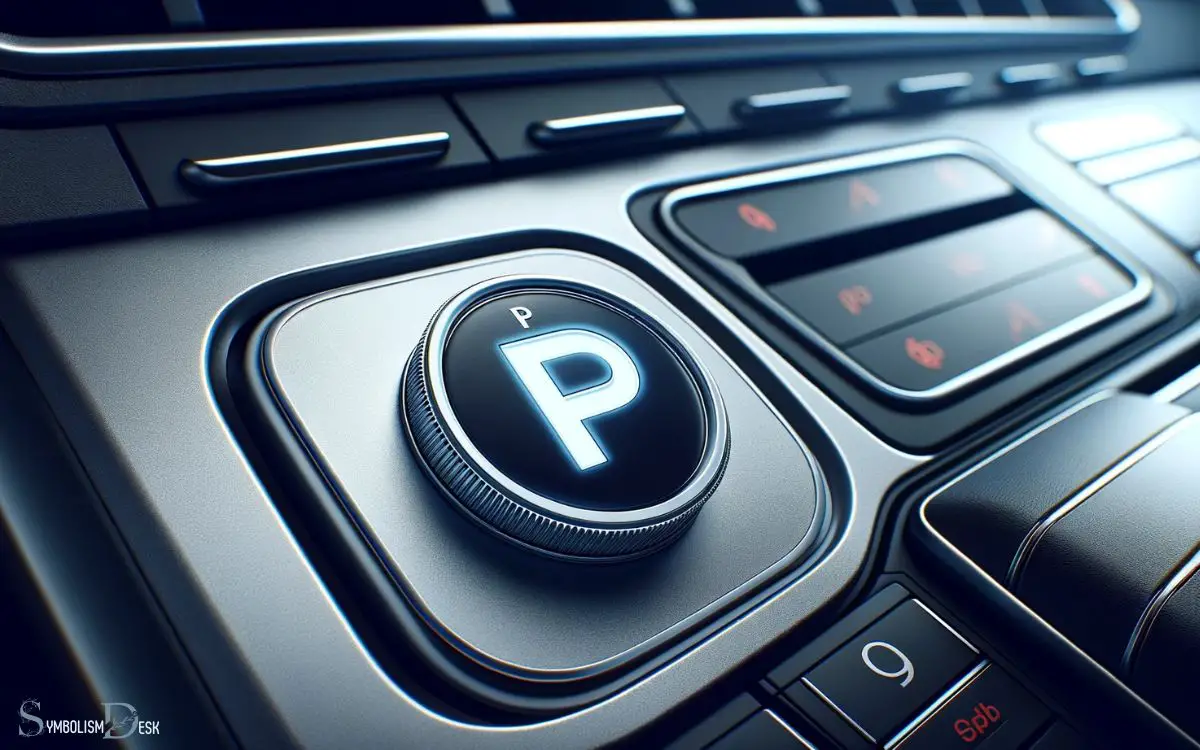
The ‘P in a Circle’ symbol on a car’s gear shift indicates the parking position. When the gear shift is moved to this position, it engages a locking mechanism in the transmission, preventing the wheels from turning.
This is essential for keeping the vehicle stationary when it is not in use. Understanding this symbol is crucial for safe and proper operation of a vehicle. When the gear shift is in the parking position, it is important to engage the handbrake to provide an additional level of safety.
Additionally, the ‘P in a Circle’ symbol serves as a reminder to the driver to ensure the vehicle is fully stopped before shifting into this position, preventing potential damage to the transmission.
Understanding and adhering to the function of this symbol promotes responsible and safe driving practices.
Importance of the Parking Brake

Engaging the parking brake is crucial for preventing the vehicle from rolling when parked on an incline or decline. This additional measure of safety provides extra assurance that the vehicle will remain stationary.
It also reduces stress on the transmission’s parking pawl, which is the small metal piece that holds the vehicle in place when the transmission is in park.
By using the parking brake, drivers can minimize the risk of putting strain on this component, potentially avoiding costly repairs.
Furthermore, in the event of a mechanical failure in the transmission or drivetrain, the parking brake can act as a backup to prevent the vehicle from moving unexpectedly.
Overall, the parking brake serves as a fundamental safety feature, particularly when parking on uneven surfaces.
How the Parking Brake Works
The parking brake, also known as the handbrake or emergency brake, serves as a crucial safety feature in a vehicle. It operates on the principle of friction to prevent the car from moving when parked on an incline or decline.
Engaging the parking brake involves pulling up a lever or pressing a button to activate the mechanism, ensuring that the wheels are securely locked in place.
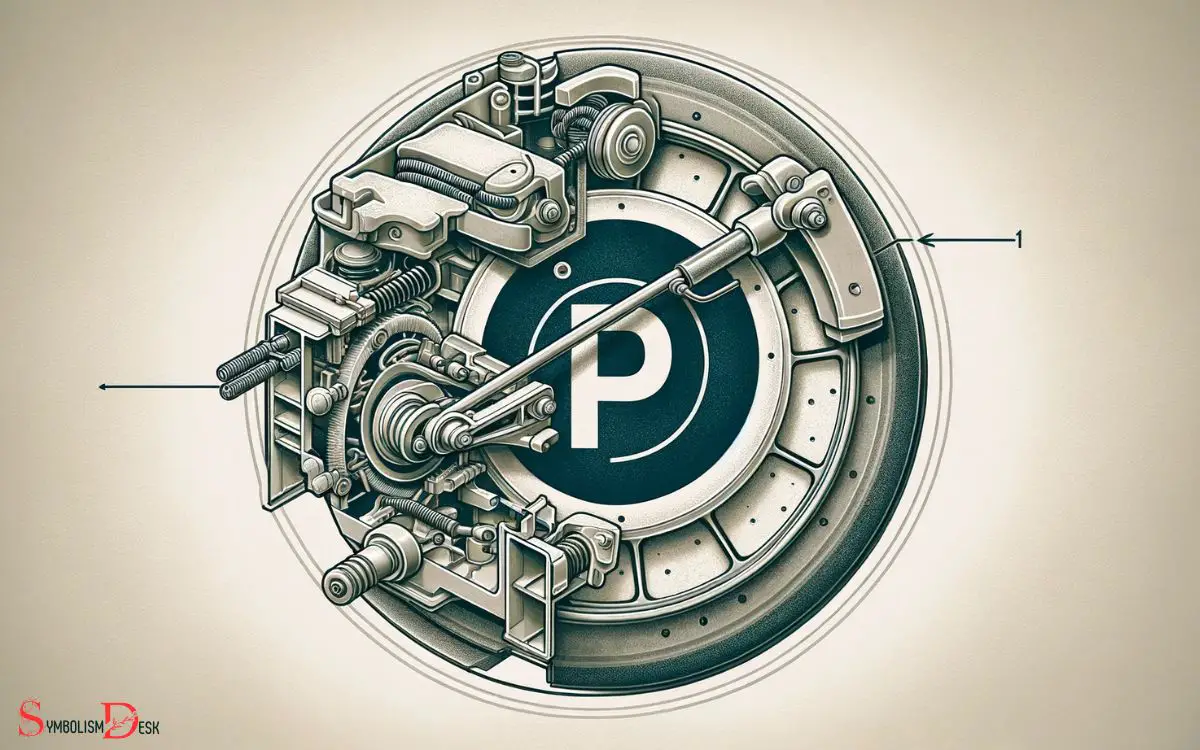
Parking Brake Mechanics
When the driver activates the parking brake, it engages a separate braking system from the main brakes, providing an additional level of security for the parked vehicle.
The parking brake mechanics work as follows:
- The driver pulls the parking brake lever, which is connected to cables or electronic actuators.
- The cables or electronic actuators transmit the force to the rear brakes, engaging them to hold the vehicle in place.
- In some vehicles, the parking brake is integrated into the rear brake calipers, while in others, it operates on separate rear brake shoes.
- Releasing the parking brake lever or button relaxes the tension on the cables or deactivates the electronic actuators, allowing the rear brakes to disengage.
Understanding these parking brake mechanics is essential for drivers to use this feature effectively and ensure the safety of their parked vehicle.
Engaging the Brake
Upon activation, the driver’s control of the parking brake initiates a specific set of mechanisms that securely hold the vehicle in place. Engaging the parking brake involves pulling up on a lever or pressing a button, depending on the vehicle’s make and model.
This action triggers a cable connected to the rear brakes, causing the brake pads to clamp down on the brake rotor or drum.
The parking brake works independently of the hydraulic brake system, providing an additional layer of security.
Below is a table outlining the basic steps involved in engaging the parking brake.
- Stop the vehicle
- Put the transmission in ‘Park’ (for automatic) or in gear (for manual)
- Engage the parking brake by pulling the lever or pressing the button
When to Use the Parking Brake
A parking brake should be used whenever a vehicle is parked on an incline, regardless of the steepness. This is essential for ensuring the vehicle remains stationary and does not roll downhill.
Using the parking brake also helps to reduce stress on the transmission’s parking pawl, which can become damaged if relied upon to hold the vehicle on a slope.
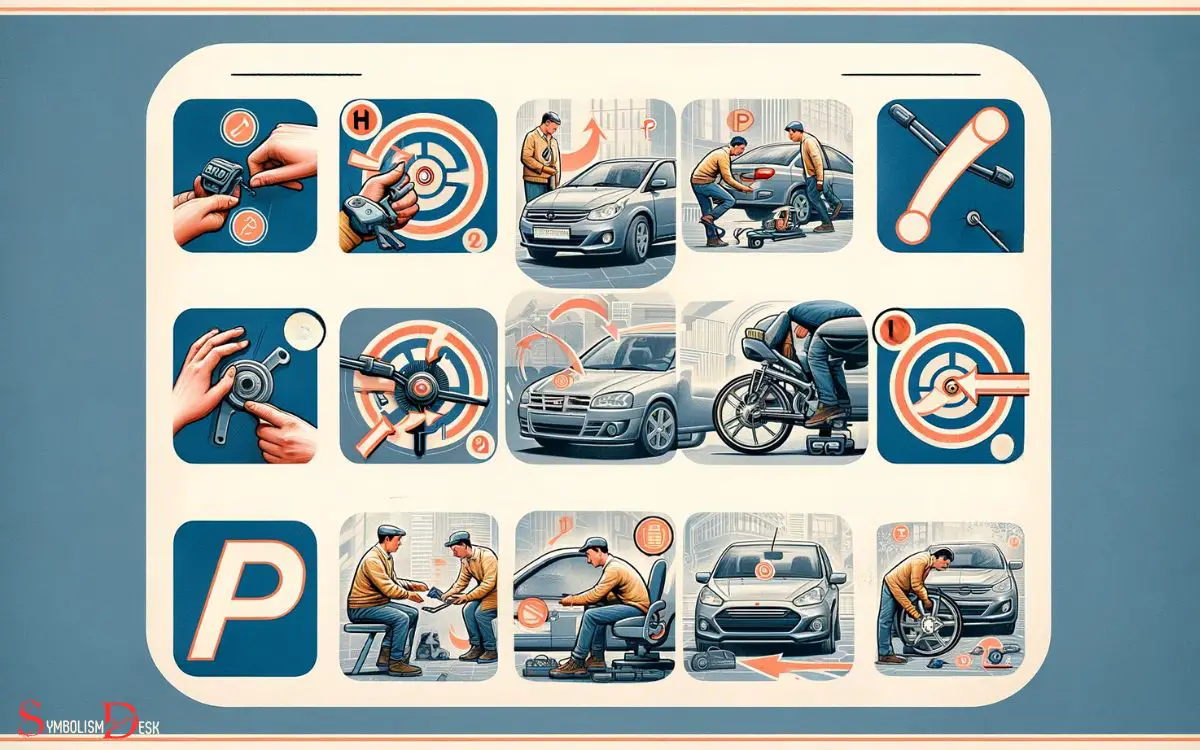
When engaging the parking brake, the driver should:
- Pull the parking brake lever or push the parking brake pedal firmly
- Ensure the parking brake warning light is illuminated on the dashboard
- Test the brake by gently trying to move the vehicle after it is engaged
- Release the parking brake only after the vehicle is in park or gear, and before driving away
Using the Parking Brake Safely
When using the parking brake, it is important to understand its significance in ensuring the safety of the vehicle.
Proper usage of the parking brake can prevent the vehicle from rolling on inclines or when parked for extended periods.
Understanding the points of parking brake importance and proper usage will help drivers ensure the safety of their vehicles and those around them.
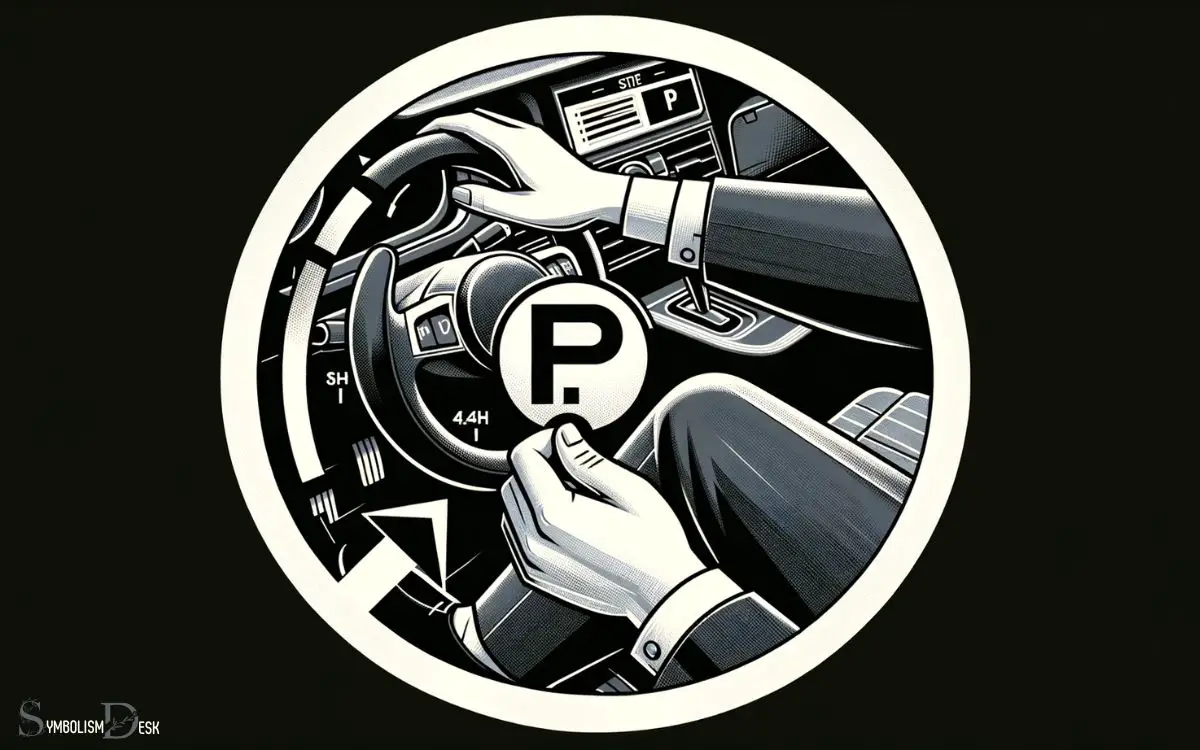
Parking Brake Importance
The parking brake is an essential safety feature in a vehicle, and it should always be used to secure the car safely.
When engaging the parking brake, drivers should ensure that: –
- The vehicle is at a complete stop
- The foot brake is depressed
- The parking brake is applied firmly
- The gear is in “park” for automatic transmission or in first gear for manual transmission.
Using the parking brake prevents the weight of the vehicle from resting on the transmission, which can lead to costly damage over time.
Additionally, it provides an extra layer of security, especially when parked on inclines. Proper usage of the parking brake helps to ensure the safety of the vehicle and its occupants.
Proper Parking Brake Usage
Proper usage of the parking brake is crucial for ensuring the safety and security of the vehicle while parked. When engaging the parking brake, it’s important to first ensure the vehicle is at a complete stop.
Pull the parking brake lever or press the parking brake pedal firmly to secure the brake. This extra measure of security prevents the vehicle from rolling, especially when parked on an incline.
When releasing the parking brake, gently press the release button (if applicable) and lower the lever or release the pedal slowly to prevent sudden movement. It’s also essential to use the parking brake regularly, as it helps to keep the brake system in good working condition.
By following these simple steps, drivers can ensure the safe and effective use of the parking brake.
Common Misconceptions About the Parking Brake
Many drivers mistakenly believe disengaging the parking brake is unnecessary when parking on flat surfaces. However, this is a common misconception that can lead to potential safety hazards and mechanical issues.

To clarify, here are some important points to consider:
- The parking brake is not just for preventing the vehicle from rolling on inclines.
- Engaging the parking brake helps to distribute the weight of the vehicle evenly, reducing stress on the transmission.
- It can also prevent wear and tear on the transmission parking pawl.
- Using the parking brake regularly helps to keep the components functioning properly, reducing the risk of malfunctions.
Understanding the importance of the parking brake in various parking scenarios is crucial for maintaining safety and prolonging the lifespan of a vehicle.
Maintenance and Inspection of the Parking Brake
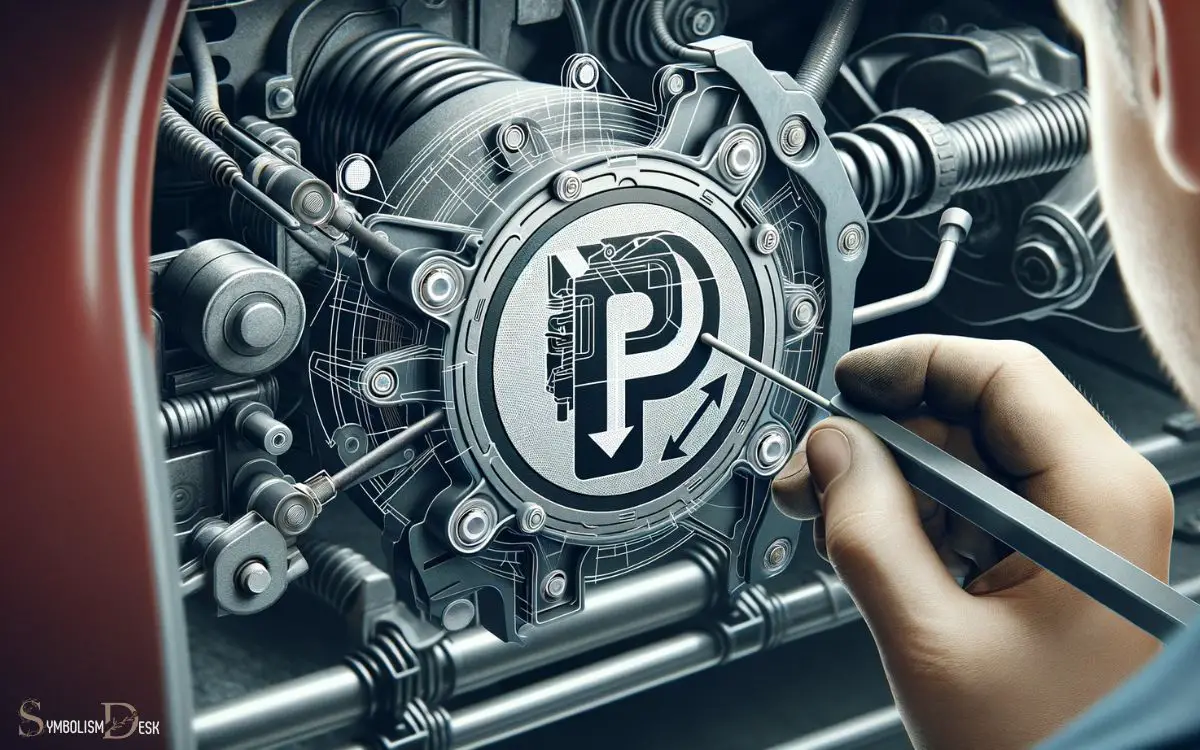
When maintaining and inspecting the parking brake, it is important to ensure that all components are in proper working condition to prevent potential safety hazards and mechanical issues. Regular inspection of the parking brake system is crucial for optimal performance.
Start by checking the brake cables for any signs of fraying or damage. Ensure that the parking brake engages and disengages smoothly without any excessive resistance. It’s also important to inspect the brake pads and rotors for wear.
Additionally, verify that the parking brake holds the vehicle securely in place when engaged. Any unusual sounds or sensations while applying the parking brake should be promptly addressed.
By conducting regular maintenance and inspections, drivers can ensure the parking brake operates effectively, enhancing overall vehicle safety.
Conclusion
The ‘P in a Circle’ symbol on your car represents the importance of the parking brake, a small but powerful tool that keeps your vehicle secure. The parking brake ensures that your car stays stationary, especially on slopes or uneven terrain, preventing unwanted movement. Alongside the ‘P in a Circle’ symbol, you might also notice the ‘i in a circle symbol car‘, which typically signifies important information or a warning that needs attention. Both symbols play a crucial role in keeping drivers informed about their vehicle’s status, enhancing overall safety and awareness.
Like a shield protecting a castle, the parking brake symbolizes safety and security, providing peace of mind for drivers. So next time you see that symbol, remember the crucial role it plays in keeping your vehicle safe and secure.






